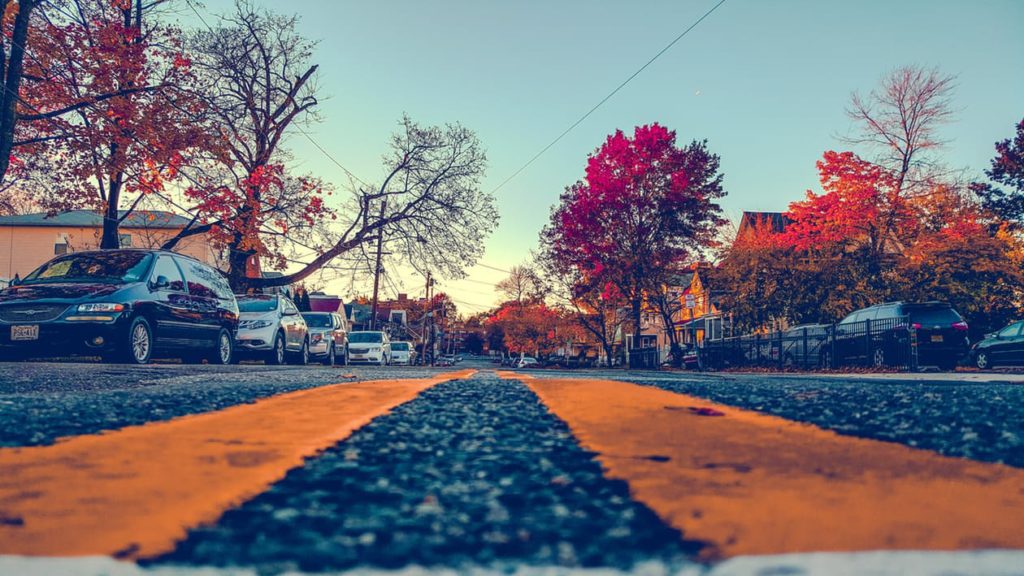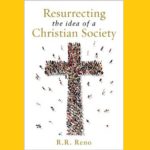Christianity is an incarnational faith. That means that our spiritual life should be reflected in our material culture, including the built environment we live in. Christians have a particular responsibility to bring beauty reflecting the presence of God into our cities and towns. The culture of twenty-first century America, however, is often not compatible with this proposal.
Decades ago, I was struck with the impression of something amiss in our country when I returned to the United States after a year of study in France. I was struck by how ugly many of our cities and towns are in contrast with the beauty of so many European cities. Long highways are lined with strip malls and a hodge-podge of uncoordinated signs and buildings, while towering blocks of cement and glass make up much of our cities.
For some time, the New Urbanist movement has been attempting to address the problem of urban sprawl by promoting mixed-use, mixed-population, walkable urban and town centers that draw people together. But how are these ideas related to Christian life? Philip Bess, a professor of architecture and Director of Graduate Studies at Notre Dame’s School of Architecture, considers the Christian vision of the New Jerusalem and its relevance to contemporary urban design in depth in his provocative 2006 book, Till We Have Built Jerusalem: Architecture, Urbanism and the Sacred.
What Does Our Architecture Express?
Start your day with Public Discourse
Sign up and get our daily essays sent straight to your inbox.“The built environment is a marker of a more general condition,” Bess contends. Our modern cities express the commercialism, utilitarianism, and individualism of our culture. But an earlier vision of the city was based on a pattern provided in Christian revelation of a divine paradise: the New Jerusalem, descended from heaven to earth.
In the Christendom of Europe, the city was a moral center: a place of privilege, of civil rights and liberties, where civilizing institutions—institutions of law and virtue, of churches and government, of art and learning—established a beautiful urban environment. Outside the city, there was danger and chaos. There were brigands on the highways and beasts in the wilderness.
Following the Industrial Revolution, however, cities became known for their urban squalor. They were places of desperate poverty and crime, “an anticipation of hell.” Today we continue to observe a depressing condition in many of our urban centers. Those who could afford to have fled to the suburbs in search of safety, privacy, and a bit of greenery. This has resulted in what is known as “urban sprawl,” a population flung wide and distant from cultural centers, a growing disappearance of rural green space, and the dominance of rush hour traffic.
New Urbanists like Bess draw on traditional urban forms in an effort to revitalize community and civic institutions that can provide cultural and religious centers as well as practical services in small shops accessible by all, even those who are unable to drive. This is envisioned as a people-centered environment, a community that recognizes the whole human being, not just homo economicus or homo privatus.
But, Bess asks, is this vision realistic? Are commercialism and individualism so embedded in both our culture and our built environment that it will be virtually impossible to institute any widespread change? He challenges his fellow New Urbanists to think more deeply about the cultural foundation that is necessary for the fulfillment of their vision. Bess also challenges Christians to think about their responsibility for the built environment and how it either facilitates Christian life and community or is an obstacle to it.
Architecture, Beauty, and Human Nature
As a starting point for an alternate vision, Bess turns to Aristotle’s understanding of the polis, which forms the center of civilized society. Civility presupposes strong ties among citizens and between citizens and institutions. Aristotle also insists that virtue is necessary for civil society to prosper and grow. Man is a social animal, Aristotle famously declared, and community is essential to the good life. The civic virtues make community life possible.
At the heart of this vision is a particular understanding of human nature. The human being is part of nature but also part of the divine plan. His life’s purpose includes raising material reality to a higher level, reflecting the divine spark within him. It is part of human nature to create culture, to seek truth and beauty, and to strive for excellence. As a social and rational being, man finds happiness in achievement that is shared with others. Well-designed cities and cultivated landscapes are the expression of this human nature at work, exhibiting the tendency toward order and beauty. When this is done well, revealing the wholeness of human life, it attracts people, and they grow to love such places.
So why are so many of our urban spaces so unattractive? What’s missing?
As Bess puts it, “The more architects and planners have turned their attention to building up the City of Man, apart from some vision of the City of God, the meaner and uglier the City of Man has become.” Utilitarian and secular preoccupations seem to have taken over, and little consideration is given to the reign of God over the world in its physical, spatial, or sensual representations. The modern mindset pushes religion aside to a private place, and architecture has become an autonomous, abstract, and utilitarian business.
Countering this sterility requires revival of the sacramental view that God makes Himself known through material things, and that matter can be a vehicle of redemption. Christians have traditionally believed that beautiful objects as well as the beauty in nature invite us to know God. The tendency toward abstraction in architecture is not spiritual, although it is thought to be so by some. Some modern architects have sought to create a “sacred space,” but this is often according to their own subjective creation. The truly sacred is received from the divine source and respected as such. Our culture is dominated by a false dichotomy between the secular and the religious, but, as Bess points out, secularism and theocracy are false alternatives. There is both a sacred order to which all are accountable, and also the rightful autonomy of earthly governance.
The Problem with Contemporary Architecture Departments
A good city is economically healthy, just, inclusive, and free. Its communities promote respect for others and help cultivate a life of the mind and spirit. Its model is the City of God. It is an imitation of the divine, animated by the Love that created the sun and stars and ordered them to move in harmony, as Dante wrote.
But how can one bring about such a vision? One must begin by believing in its truth and goodness. In many academic institutions, including schools of architecture and urban design, the very idea of truth is considered illusory. According to Bess, architects are often aiming to create their own subjective “authenticity,” a modernist attitude that promotes “novelties a propos of nothing.” When nature is seen as a product of chance rather than a gift from God, human culture becomes a series of power struggles over artificial constructs. This makes it difficult to make a coherent case for community as an objective good.
Much of the contemporary culture of architecture, Bess points out, lacks a sense of shared and lived notions of “the good life,” and therefore lacks the intellectual, cultural, and institutional resources to carry out such a vision of the city. Where such resources do exist, Bess says, they are in architecture programs located in religiously sponsored academic institutions. He cites five such programs providing accredited professional degrees: Judson College, Andrews University, Catholic University, Detroit Mercy, and Notre Dame. These are not regarded as leaders in American architectural education, but they are better suited than secular institutions to provide the basis for communal purposes because they teach that human well-being is necessarily related to communal membership and obligation. Cities, buildings, and physical spaces are the concrete expressions of this orientation.
What About Religious Communities?
Churches have traditionally had a central place in the design of cities. But in contemporary America, many churches have been relegated to side streets, both literally and figuratively. They are out of view, surrounded by large parking lots, and have limited influence on the city at large. Is there a way for church communities to take some responsibility for renewal of urban or neighborhood spaces?
For church buildings to recover their place at the center of neighborhoods and urban environments, there will have to be a conscious effort born from an awareness of the cultural crisis in our country. The Congress for the New Urbanists (CNU) is a non-partisan and non-sectarian organization that can support any community, including religious communities, interested in urbanism. New Urbanists, Bess asserts, need to avoid becoming a tool of the real estate industry and make themselves available to cultural and religious institutions. Historically, religious communities have been patrons of good architecture and urbanism. More recently, the New Urbanists have already worked on projects that have overcome the problems of zoning ordinances, street design, and parking regulation by obtaining a designation of an area as a Traditional Neighborhood District (TND), which overrides the established legal structure. These projects necessarily involve public processes in which local church communities could certainly take part.
America is a place of religious pluralism, and this can be reflected in the way cities and towns are organized. In Savannah, Georgia, for example, the city’s historic center has twenty-three wards, each of which has a public square. Half of them are fronted by different places of worship—Episcopalian, Presbyterian, Methodist, Baptist, Jewish, and Catholic. Bess also describes the “London-residential-square,” which could be a model for neighborhoods built around a local congregation or parish.
Although a great deal more practical detail is needed to implement the vision he describes, Bess is primarily concerned with laying out its philosophical basis. He explores in some depth its relation to natural law and to a holistic understanding of the human person and human community. Refashioning our built environment in this way will be an enormous and long-range challenge, considering the current state of our cities and suburbs. Yet there are many who are disgusted with the current landscape of crowded highways, ugly strip malls, huge parking lots, overpowering mega-stores, and boring suburbs that sprawl throughout the disappearing countryside, as well as our dilapidated urban centers.
It would be helpful to develop more specifically how the creation of communities that are walkable, practical, and beautiful will help in the active practice of our faith as well as our human well-being. For example, how nice would it be to walk over to a plaza to pick up some food at a small grocer’s and stop to have coffee with a friend whom you could invite to visit the beautiful church opposite! Maybe there would be a small gift shop, a hardware/general merchandise store, and a beauty salon whose owners lived above their shops and were always ready to share the latest news in the neighborhood. Sometimes a craft show or local music trio could draw the neighbors together to share a little enrichment. With a mixed-use neighborhood, residents of a variety of backgrounds would be living together, instead of separated into homogeneous suburban homes. Many small stores throughout a city could provide more employment and less traffic than a few mega stores.
If Nehemiah and the families of Jerusalem could rebuild the city with sword in hand, perhaps we can work together to rebuild American cities, letting God’s presence shine forth and respecting our whole human life in its fullest potential.













